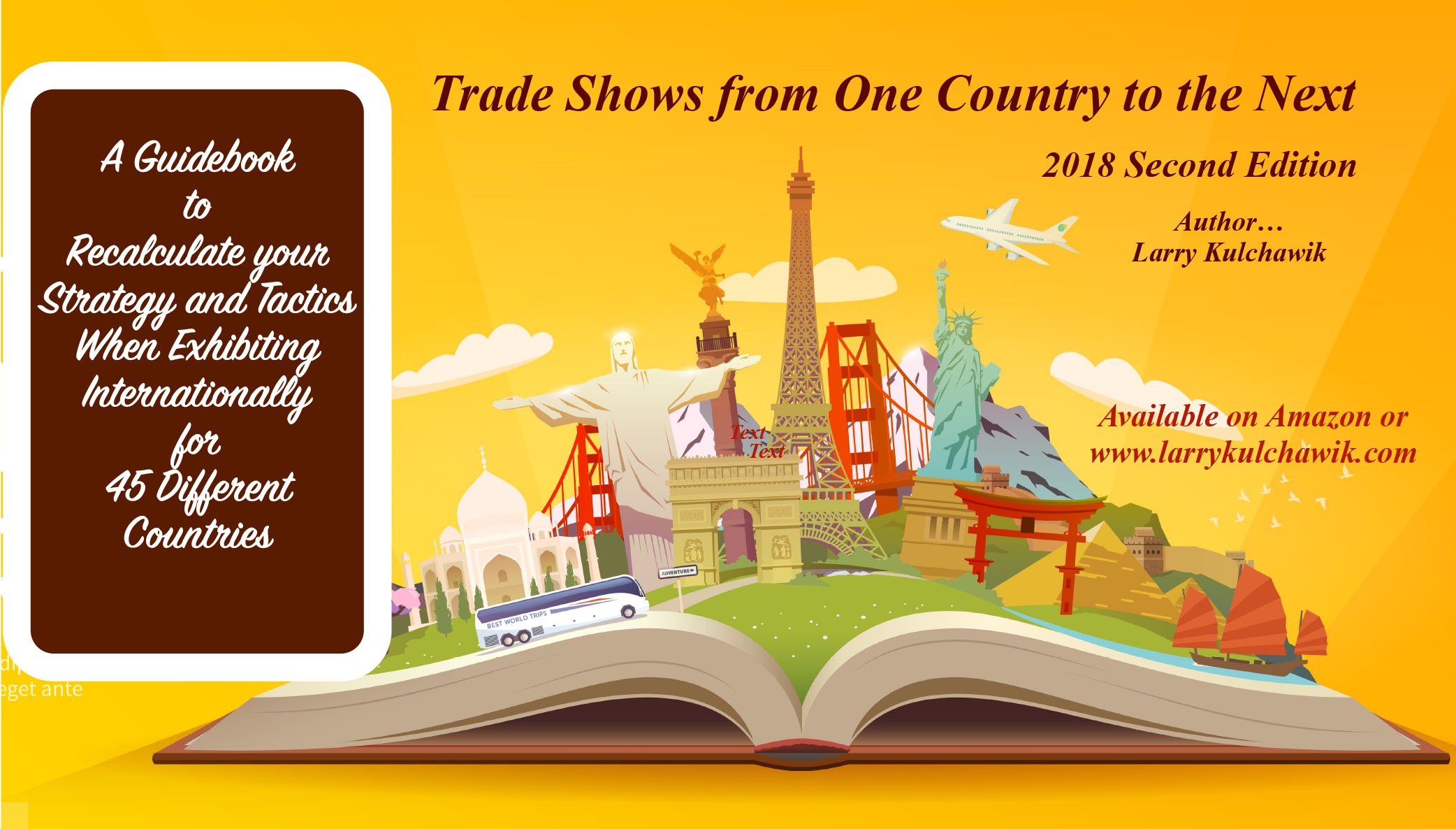
After 46 years doing trade show marketing, my passion for the trade show industry still glows brightly. As many of you in our industry know, it gets into your blood. We each are so lucky to have fallen into a job within an industry that keeps on evolving and keeps us interested. Keeping up with current trends and methods is key to continued success. What once was a ‘value-added’ service you provided is now an expectation. Creative solutions, overnight turn around, integration of technology, lead management, and international services are now expected services from the clients we serve.
Two of the newest expected services from exhibitors are their suppliers’ ability to incorporate technology into a design, and the ability to serve a client internationally and manage a program. Both usually require outsourcing with a trusted partner. You may not have a second chance to show your skills here when jump-starting your efforts.
Over the years, my interests evolved to focus on international exhibiting. After serving on the IFES board for years I met many exhibit company owners from around the world and asked each of them- How should I act when exhibiting in your country? After collecting responses from 30 different countries, I decided to write a book to share their thoughts. The theme of the book – There is no Right way, there is no Wrong way, there is only a Different way. Understand and respect what is different and you are on your way to success.
I have just completed the second edition of the book- Trade Shows from One Country to the Next. The guidebook reviews venues, regulations, exhibit design, and cultural differences when working a trade show in any of 45 different countries. I do believe that in the next five years exhibitors and exhibit suppliers will not need this book, as they will have acquired adequate experience and trusted suppliers, and will know what adjustments need to be made when exhibiting abroad.
Eight Tips when Exhibiting Internationally
The biggest mistake that U.S. companies make when taking their U.S. trade show experiences abroad is assuming that their formula for success in the U.S. will work the same internationally. Marketing tactics and exhibit designs that are effective in one country don’t always work in another. Exhibiting abroad requires a recalculation of thinking and exhibit strategy for both exhibit design and engagement styles. Here are some tips for American exhibitors when taking their brand and message abroad.
1. Don’t do it alone:
Find an experienced partner from the region or one who is familiar with the venue, culture, and the event. Work with them to create an exhibit layout that meets the regulations and expectations for the event. Communicate inches/centimeters with your partner — it will save time and confusion. Your partner will be helpful to help you understand how the international venue approaches freight and material handling, labor, other show services. Show service contractors, as we know them in the U.S., are not the same abroad.
2. Design your exhibit to accommodate cultural expectations:
Should you include a raised floor, or use a carpet? A raised floor in Europe is not only used to hide electric cords and create a level floor. It is often viewed by the exhibitor as a stage that invites guests to their “kingdom.”
Other design questions that should be asked: Are hanging ID signs used and permitted? Is the lighting above or within the booth? What are the electrical requirements? Include a bar area with the kitchen? Catering or not? Private seating areas or open? Live presentation or one-on-one discussions?
3. Tailor your product offering:
To the needs of the world region in which you’re exhibiting. Does your product or service have the same demand or attraction for this region of the world as it does in the U.S.? What unique value proposition does it offer? Promoting American designer shoes in Italy may be a hard sell.
4. Be sensitive to cultural differences:
As an exhibitor working the stand, learn about local topics to discuss (sports, art, attractions, history), as well as topics to avoid (religion and politics). Learn how to greet guests- shake hands, bow, or nod. Your product, services, and exhibit design may be great, but how you engage with an international audience can make or break your chances to attract new buyers. Just as fish don’t know they’re in the water, people often find it difficult to see and recognize their own culture until they start comparing it with others. Take the time to understand the culture.
5. Consider hiring a receptionist in the booth from the country in which you are exhibiting:
Although English may be the language of business, most European and Asian trade shows will have visitors from neighboring countries, so a receptionist who speaks several languages is extremely useful. They are also skilled at the art of engaging with your visitors to make a good first impression, from the visitors’ point of view. A pre-show briefing of your company’s value offering is usually all that is required of a reception temp since your team will be nearby to provide the technical knowledge.
6. Translations are a sign of respect. Take the time to print your business cards in two languages:
Although many attendees will speak English, a dual- language card demonstrates your sensitivity and your seriousness about marketing in their country. Along the same lines, you may want to translate the graphics on your exhibit stand as well. This does not apply to your logo or tagline but may help explain your product or service benefits. Translations should be proofread by a bilingual expert who is familiar with your industry.
7. Not all international shows require a badge for entry:
Especially at auto, boat, or consumer shows open to the public. Without badges, it’s more difficult to identify potential buyers. A quick evaluation will be necessary. If show badges are not provided for visitors and exhibitors, make your own for your booth staff to wear. At least attendees will know who you are.
8. Be aware of how to dress for the show:
The casual golf shirts with logos worn by exhibitors at many shows in the U.S. might not be appropriate for a show in Europe or Asia, where more formal attire is worn. Ask the show organizer or your exhibit partner for advice here. Your first impression can be a lasting impression.


